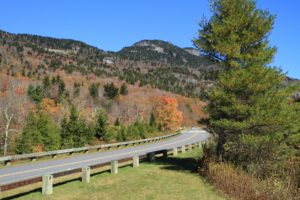WESTERN NORTH CAROLINA – May 3, 2023 – Western North Carolina’s clean outdoor air has been valued for years. The air and mountain location became a major center for the treatment of tuberculosis from the 1880’s to the 1930’s. However, by 2000 the outdoor air quality became impaired from pollution primarily from coal-fired power plants. The main pollutants were fine particulate matter, PM 2.5, and ground-level ozone. PM 2.5 is a combustion product from the burning of fossil fuels and wood. Particulates can also occur from forest fires and can be formed secondarily when different chemicals combine in the air. Ground-level ozone forms when chemicals from fossil fuels react in intense heat and sunlight. The biggest threat to outdoor air quality is climate change. Hotter summers mean more ground-level ozone and more forest fires producing more PM 2.5.
Federal and state clean air policies has reduced excessive ground-level ozone in North Carolina from 100 days in 2000 to 7 days in 2017 and only 1-2 days in Buncombe County in 2017. The United States (U.S.) Environmental Protection Agency (EPA) is authorized to specify regulations and standards for the concentrations and emissions of outdoor air pollutants under the Clean Air Act. PM 2.5 emissions have been reduced dramatically since the 2002 Clean Smokestacks Act, a state policy, that required power plants to reduce toxic emissions.
Mobile emissions remain to be a significant source of PM 2.5 emissions from gas-powered vehicles, road dust and the wear products from tires. The transportation sector accounts for 36% of North Carolina’s greenhouse gas emissions. Medium to heavy-duty vehicles account for 32% of particulate matter emissions even though they represent about 3% of the state’s registered vehicles. PM 2.5 is also higher in areas in western North Carolina with forest fires and controlled burns.
High levels of air pollution can cause many serious health problems. Ground-level ozone can cause lung damage and asthma, bronchitis, and emphysema. Excessive PM 2.5 is associated with heart disease, lung disease and early mortality.
Outdoor air pollution is harming vulnerable populations and communities, making this an issue of environmental injustice. People are exposed to more outdoor air pollution if they live near a busy highway or a factory. Many at-risk neighborhoods are more susceptible to heat-stress and the formation of ground-level ozone if they are located near ‘heat islands’ characterized by areas of asphalt, concrete, and fewer trees for shade.
Recent federal and state programs are continuing to improve the quality of the air we breathe by reducing fossil fuel combustion from cars, trucks and buses. The Inflation Reduction Act of 2022 promotes many environmentally-friendly programs like transitioning to electric school buses to keep our children healthy and away from toxic diesel. On the state level, Governor Cooper signed an executive order in October recommending an Advanced Clean Truck program to encourage medium and heavy-duty vehicles to transition to electricity.
Listen to the full report below:
Audio Player
Contact: Dr. Dick Needleman, Health reporter, 103.3 AshevilleFM, healthyasheville@ashevillefm.org
